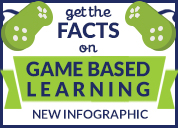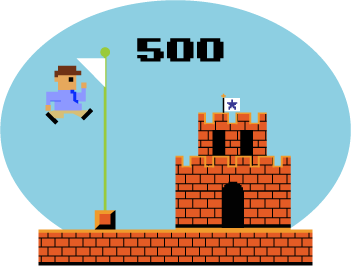In the Fall of 2011, we wrapped up an 8 part blog series on gamification and game based learning. Sharon Boller, President of BLP, authored the posts with the beginning game designer in mind. If you are just getting started with game based learning, all the information you need is right here. You can view each post individually, or check out the learning brief in it’s entirety right here: A Primer on Learning Game Design by Sharon Boller.
 Want a really cool way to get the facts on Game Based Learning? Check out our new Game Based Learning Infographic! We lay out some great examples of the efficacy of game based learning and gamification, all backed by solid research and great case studies. Click Here to view.
Want a really cool way to get the facts on Game Based Learning? Check out our new Game Based Learning Infographic! We lay out some great examples of the efficacy of game based learning and gamification, all backed by solid research and great case studies. Click Here to view.

Part 1: The What and Why of Gamification
What gamification learning means, and how to integrate “common game elements” into training.
View Part 1
Part 2: Mastering the Jargon of Game Design
If you want to create learning games, a logical starting point is to master basic terms and definitions.
Part 3: What Makes for a Meaningful Game?
Knowing the terminology doesn’t mean you can create a fun and meaningful learning game. Creating games is not rocket science, but it is something that improves with practice.
View Part 3
Part 4: Getting Started at Creating Games
You can create a fully-functioning simple game in an afternoon – though, admittedly, this would be a FIRST rendition of a game – not the final version. Here are two examples of games we created in the span of two hours.
Part 5: Getting Ideas for Games
There are numerous ways to approach the design of a game and some can get pretty sophisticated. These are a few simple methods outlined by Brathwaite and Schreiber in their book:
Part 6: Constraints that Affect Design
No matter how good your initial idea is, business objectives and real world limitations will affect your final product. Here are some of the big constraints that will influence design decisions:
Part 7: Play Testing Games – An Essential Step
You can definitely brainstorm a game idea in an afternoon and build a simple prototype. However, going from the rough idea to a polished game takes iterations and time. A great game requires lots of tweaking, modifying, and refining.
Part 8: When You Play Test… And You Find Out the Game Is Not Fun
When you play test early versions of your game, you WILL find out some things don’t work as you envisioned. Perhaps the game is too hard – or too easy. Perhaps it takes too long to play. Perhaps some key learning isn’t happening. Or, perhaps the rules are confusing.


